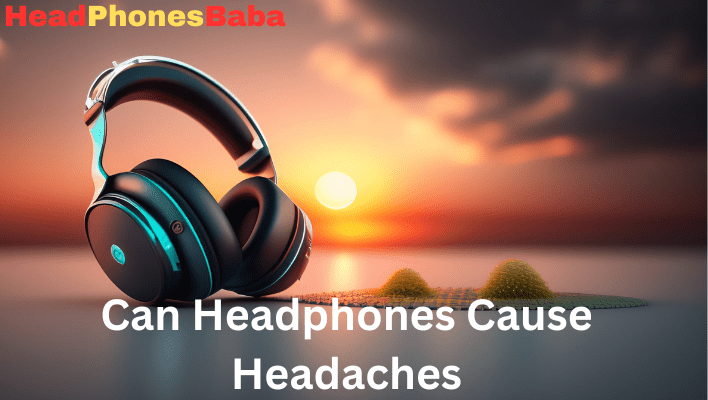Headphones have become an integral component of contemporary lifestyles, catering to various applications such as media consumption, telephony, and music listening.
While providing an immersive auditory experience, headphones may also trigger headaches.
Factors such as ear pressure, excessive volume, specific frequencies, extended usage, and tight-fitting headphones can potentially lead to headache from headphones.
It is therefore essential to identify the underlying causes and possible solutions to mitigate or alleviate headphone-induced headaches.
This article offers a comprehensive account of the factors contributing to headphone-related headaches and presents strategies to prevent their occurrence.
We Consulted With The Experts
In an effort to obtain an accurate and reliable answer to the question at hand, we consulted with Dr. Hamza, and Dr. Mubashir, respected medical professionals.
As a doctor, they possess the knowledge and expertise necessary to provide a professional and informed response to this medical matter.
Our article is based on a combination of Dr. Hamza’s and Mubashir insights and our own extensive research, utilizing a variety of credible sources to ensure the accuracy and credibility of the information presented.
Can Headphones Cause Headaches?
Yes! Headphones cause headaches. It is a common misconception to assume that only low-quality headphones may cause headaches.
Even with high-quality headphones, one should exercise caution to avoid potential issues.
If you are curious about the causes and mechanisms behind headache from headphones, the answer can be found below.
Factors That Prompt Headphones-Induced Headaches
There are the following factors that can induce headache from headphones:
- Wearing Headphones For The Longer Time Period
This factor shows that headphones cause headaches. The use of headphones can offer numerous benefits, including privacy, an enhanced listening experience, and improved focus.
However, it can also lead to negative consequences such as headaches and potential hearing issues.
Prolonged use of headphones can cause tension headaches, which occur due to the weight and pressure of the headphones.
- Using Headphones That Are Tight
Tight-fitting headphones can exert pressure on the temporal bones situated on either side of the skull, leading to headaches.
Additionally, this pressure can also cause tension in the muscles of the scalp and neck, further exacerbating the issue.
- Listening At A Loud Volume
Exposure to loud volume while using headphones can lead to headaches as a result of noise-induced hearing loss (NIHL).
The human inner ear contains hair cells that are responsible for transmitting sound signals to the brain.
Prolonged exposure to loud noise can cause these hair cells to become overstimulated, leading to their damage and reduced effectiveness in transmitting sound signals.
This results in an increased burden on the brain to process the sound signals, which can lead to headache from headphones.
- Using Headphones With Unfit Ear Tips
Ear tips sizes can be small, medium or large. Improper headphones can cause headaches. This is due to the following reasons:
- Pressure Points Formation
Pressure points can develop within the ear canal while using headphones, leading to discomfort and ultimately, headaches.
- Absence of Proper Seal- Degraded Sound Quality
Using ear tips that are not properly fitted can result in an inadequate seal within the ear, leading to a degradation in sound quality.
In an attempt to compensate for this, users may increase the volume of their headphones, which can ultimately lead to headaches.
- Noise Isolation
Improperly fitted ear tips can also hinder noise isolation, making it difficult to block out external sounds.
This can lead to the need for increased volume levels, resulting in high sound pressure in the air and ultimately causing headache from headphones.
- Headphones With Shallow Ear Cup Padding
The shallow padding in ear cups can cause an unequal distribution of sound, leading to uneven pressure and the formation of pressure points in the ear and head.
These pressure points are often located near the top and bottom of the ear cups where headphones exert the most pressure.
In addition, shallow ear cup padding can result in inadequate noise isolation, causing users to increase the volume to compensate. Thus, headphones cause headaches.
- Temporomandibular Joint (TMJ) Disorders
Temporomandibular joint disorder (TMJ) is a condition that can cause pain in the jaw, neck, face, and ears, as well as headaches.
Wearing headphones that are tight and exert force on the jaw joints can result in TMJ disorder.
Additionally, listening to music or noise through headphones for extended periods of time can cause fatigue in the muscles of the neck and jaw, exacerbating TMJ disorders.
- Loud And High-Pitched Sounds
Loud and high-pitched sounds in headphones cause headaches by triggering a stress response in the auditory system.
This response releases stress hormones such as adrenaline and cortisol, which can cause the blood vessels in the neck and head to contract and reduce the oxygenated blood flow to the brain, leading to headaches.
Furthermore, high-pitched sounds can cause tightness in muscles, including the neck and shoulder muscles, due to the tension and stress associated with the loudness and high pitch sounds.
While the exact relationship between loud volume and headaches is not fully understood, it is clear that there is a connection involving the nervous system, auditory system, blood pressure, and tension in muscles.
- Wearing Glasses and Headphones That Do Not Fit Simultaneously
Simultaneously wearing headphones and glasses can result in discomfort or pain due to the pressure that is exerted on the temples.
This is because the ear cups of the headphones and the temples of the glasses both put pressure on the same area.
Additionally, the ear cups may press against the arms of the glasses or the temples themselves, leading to discomfort. Thus, it is said that headphones cause headaches.
Solutions: Ways To Prevent Headaches Caused Due To Headphones
There are the following solutions that can reduce headaches:
- Never Use Headphones For Longer Periods Of Time
It’s important to take breaks while using headphones to reduce the risk of developing headaches.
Experts recommend taking a break for at least 10-15 minutes every hour to avoid strain on the ears and head.
Additionally, using headphones only when necessary can also help reduce the overall usage and limit exposure to potential risks.
Finally, it is also recommended to use headphones that are comfortable and properly fitted, to minimize the pressure points and discomfort.
- Know Your Ear Shape and Buy Headphones Accordingly
Correct fitting of headphones is crucial in preventing headaches and discomfort while using them.
When purchasing headphones, it is essential to consider the size and shape of your head and ears.
Look for headphones that have adjustable features such as a stretchable head strap or different-sized ear tips.
These features will ensure that the headphones fit properly and do not exert excessive pressure on your muscles, jaw joints, nervous system, and skull.
- Avoid High Volume
Listening to loud sounds through headphones not only increases the risk of headaches but can also lead to permanent hearing damage.
To prevent this, it’s important to listen at a controlled volume level that does not overstimulate the hair cells in your ears and maintains your overall ear health.
- Buy Headphones With Some Degree of Adjustments
To avoid experiencing discomfort and headaches while using headphones, it is important to invest in headphones that have customizable features.
This can include options such as multiple sized ear tips, different types of ear cups, or a stretchable head strap.
By utilizing these features, you can find the right fit for your individual needs and prevent excess strain on your muscles, jaw joints, nervous system, and skull.
This can ultimately lead to a reduction in headaches and overall discomfort.
- Invest in Good-Quality Headphones With The Following Features:
- Weight of Headphones
To avoid strain on your head and shoulders when wearing headphones for an extended duration, it’s important to choose headphones that are lightweight.
- Ear Cup Size
Choosing headphones with the right size of ear cups is crucial to avoid creating a partial vacuum that can cause headaches.
It is recommended to purchase headphones that fit your ear cups or consider buying ones with larger ear cups to block external noise effectively.
- Ear-Tip For Earbuds
When choosing ear tips for earbuds, it is important to consider two factors: the activity for which you plan to use the earbuds and your personal comfort and preferences.
- Compression Force
It’s essential to find the right balance between comfort and fit when choosing headphones. Headphones that are too tight and uncomfortable can cause tension and discomfort in the nervous system, ears, jaw joints, muscles, and skull.
On the other hand, if you choose headphones with little compression force, it may lead to poor sound quality. Therefore, it’s crucial to find headphones that fit well and are comfortable enough for extended use.
- Adjusting Options
Purchasing headphones with adjustable options is recommended if you are unsure of your size. This allows you to personalize the fit to your comfort level, which can prevent headaches while still providing good quality sound.
Final Takeaways
To sum up, headphones have become an essential aspect of our daily routine, providing us with an immersive listening experience while enjoying music, movies, or communicating with others.
However, prolonged use, high volume, and tight-fitting headphones can cause headaches due to the pressure they create in the temporal regions and around the ears.
Therefore, to avoid headaches, it is crucial to purchase headphones that fit well, adjust the volume to a controlled level, and take regular breaks.
While headphones offer several benefits like increased focus and privacy, it is important to use them responsibly to prevent any adverse effects on our health.

Zarghuna Rahman is a passionate, creative electrical engineer with an eye for the extraordinary. Writing is her passion and her blog posts on the best headphones are nothing short of inspiring. She is dedicated to helping people get the most out of their listening experience, offering her readers user-friendly guidance they can use in their everyday lives.

